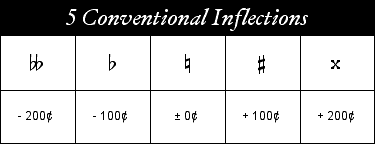
When signs are written on the staff to the left of notes, these are called inflections. Modern conventional inflections alter pitches in ± 100 cent increments.

Examples of conventional sharp inflections of G and flat inflections of D are given below.


Like conventional inflections, extended inflections appear to the left of a note at a given position, altering the pitch of that note. However, pitch alterations are much smaller, giving increments of only ± 5.9 cents.
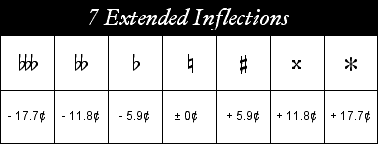
Inflections are used to fine tune pitches at any position. Examples of extended sharp inflections of G and flat inflections of D are given below.
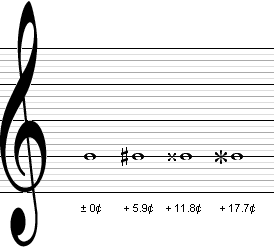
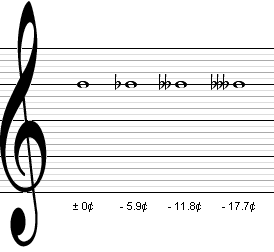
Notation also must be dealt with in written and spoken language. Ideally, language should reflect the notation unambiguously. For inflections, the spoken and written language follows the order of the notation from left to right, as shown below.

The example below shows all possible inflections of the G position, with the spoken equivalent given below each note.
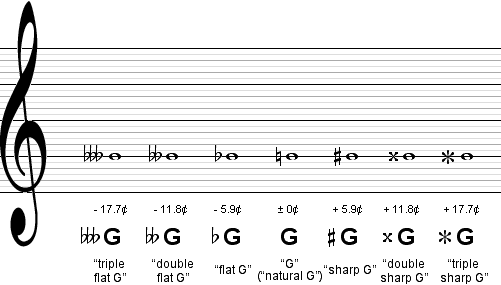
Because both inflections and positions use signs, for positions including accidentals, use of inflections results in labels having signs at both the left and the right of a letter, as shown below.

The example below shows all inflections of the B flat position in bass clef, with the spoken equivalent given below each note.
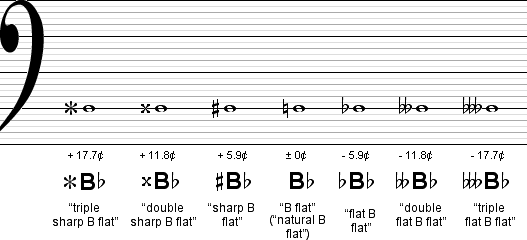
When position labels use enharmonic shifts, a complete pitch label may involve up to four symbols, as shown below.
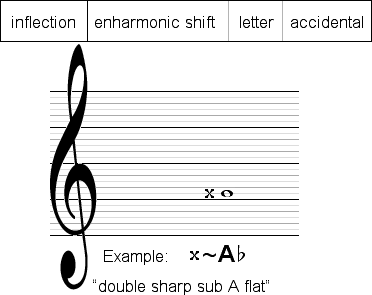
Single and double inflections are called essential inflections because pitches which correspond to these inflections are all distinct from one another. For example, the notation of an unbroken microscale employs the five conventional signs as inflections for each position, resulting in a sequence of distinct pitches. An example spanning from G to A on the treble staff is given below.
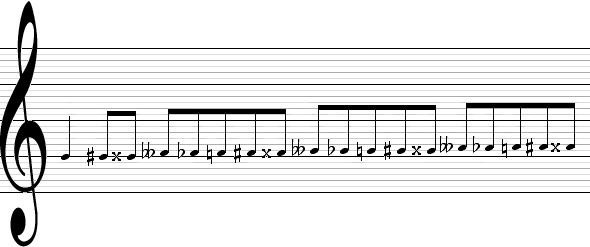
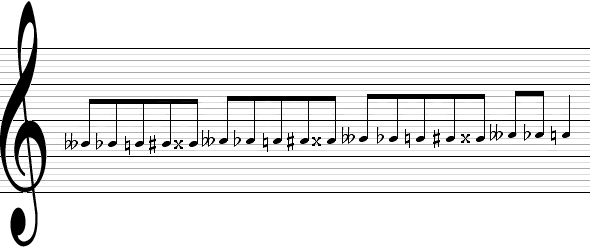
Triple inflections are called nonessential inflections, as they represent duplicate pitches, or enharmonics. Enharmonics merely allow for some flexibility in the spelling of intervals. Triple sharps are enharmonic with double flats of the position above, while triple flats are enharmonic with double sharps of the position below.
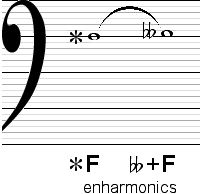
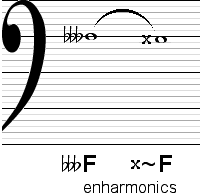
NEXT: Keys